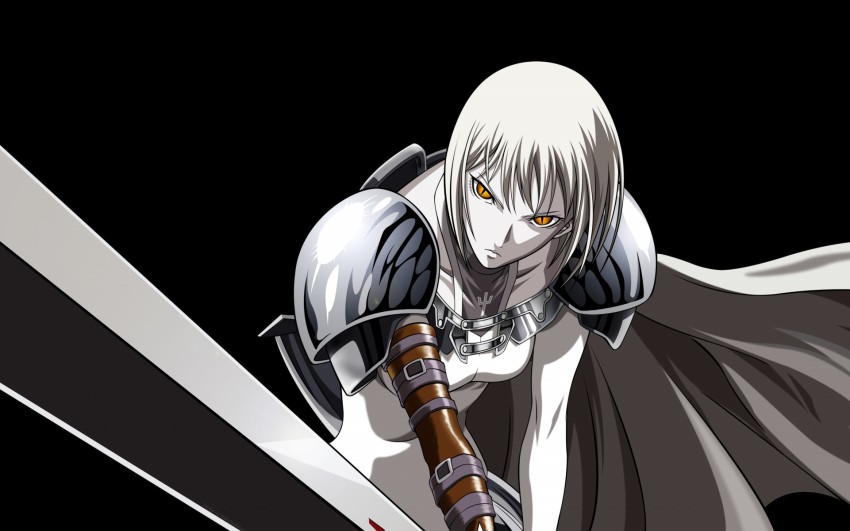Claymore
January 22, 2017 · 1 comment
By Hugh David.
Fans of Berserk and Fullmetal Alchemist will find a lot to like in this epic twenty-six-part saga from 2007, which adapts the first eleven volumes of Norihiro Yagi’s manga, published from 2001 to 2014 across several magazines in the Jump family. But what sets Claymore apart from the run-of-the-mill fantasy/swords-and-sorcery manga and anime that preceded it? For starters, despite the female warriors who bear the series title, there is a distinct lack of comedy and overt fan-service – no sexed-up D&D sitcom this. Second is the particular blend of European and Japanese mythological elements, pitting Japanese-style Yoma (in this series demon/human hybrids) against Western-looking characters in a European medieval-style landscape complete with Christian churches and priests. Third, and most discussed about the show, is the combat: this is one of the best action shows to come out of Japan this century.
While it shouldn’t be so anomalous as to require mention, shows like Sorcerers and Rune Soldier were very much RPG-based stories with a great deal of comedy, sexual innuendo and fan service. Claymore’s lead Clare is striking but fully clothed and armoured, hugely and increasingly capable in the numerous fights as she and other Claymores encounter more and more Awakened Yoma. This is not a light-weight watch; Claymore’s overriding tone is one of emotional rigour, grim fortitude and self-sacrifice in the face of increasingly overwhelming odds, a very samurai-like idea indeed.
Set on an island with multiple states, each one with its own Claymore allocated to defend the human populace from Yoma threats, the European medieval-like scenery, towns and clothing give something of a classic high fantasy feel to the show, but the brutal violence coupled with the contrast between the ordinary fearful inhabitants and the Claymores put this more firmly in line with the heroic fantasy subgenre. The near-albino looks of the Claymore women (for they are all apparently now women, although once their ranks included men, too – this is a key plot point that hides a larger mystery) is reminiscent of Michael Moorcock’s legendary hero Elric of Melniboné, whose visualisations on book covers and in comics adaptations seems to have impacted strongly on Japanese artists working in videogames, manga and anime (see also Griffith in Berserk). It also gives them a slightly angelic tint, like church statues come to life, which makes it all the more unnerving when they are torn apart in combat and the blood flows.
And, oh, those fight sequences! Bloody and brutal, acrobatic and agonising, they are some of the best animated swordfights seen since Sword of the Stranger (a movie released in the same year as Claymore – clearly something was in the air). While specialists can argue as to whether the huge swords the warriors use are actually claymores in the original Scottish sense, they are beautifully animated and do some seriously graphic damage to the Yoma. The exhilaration that comes with these scenes is an essential counterpoint to the slowly-unravelling mystery plot, with every revelation leading to yet more dangers and mounting odds. And it is here that Claymore reveals its final secret to the viewer.
For all the men involved in the show’s creation, its refusal to play the fan-service game and the dynamics between the Claymores, the organisation who create and run them, and the Yoma means that the show offers a very strong feminist subtext. This emerges over the course of the show slowly but surely, and is fully in place by the series’ final arcs. It proves hugely refreshing in a medium and a subgenre not well known for such, and helps seal Claymore’s reputation as a uniquely first-class fantasy action saga.
Claymore, the complete collection, is released by Anime Ltd.

Turps
December 4, 2017 11:19 am
I enjoy fanservice so it's a no from me.